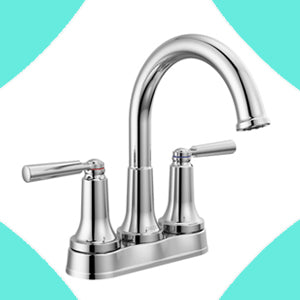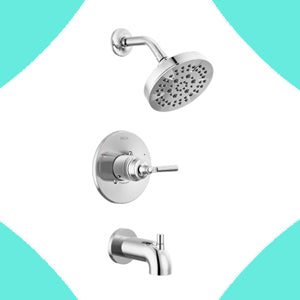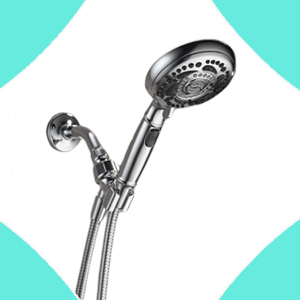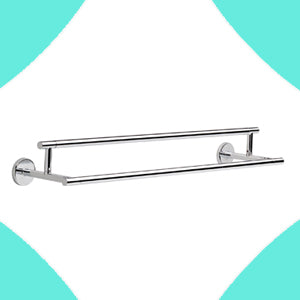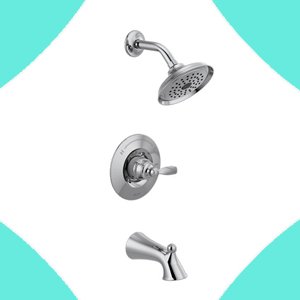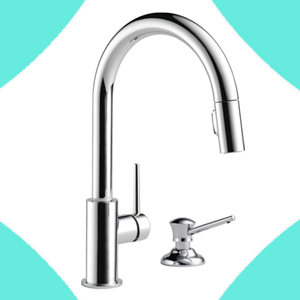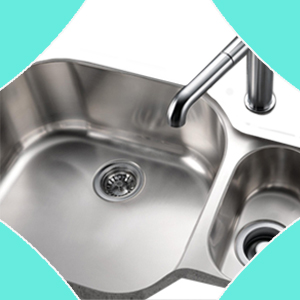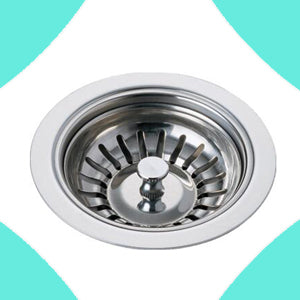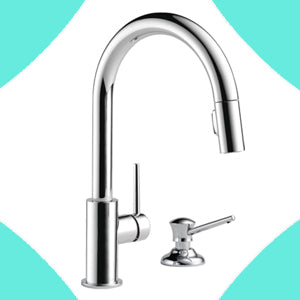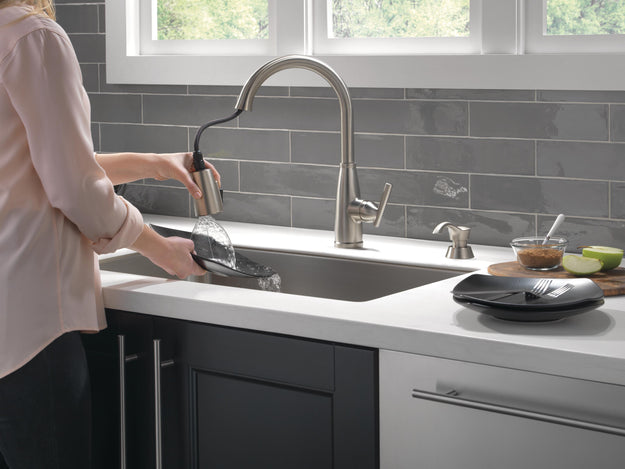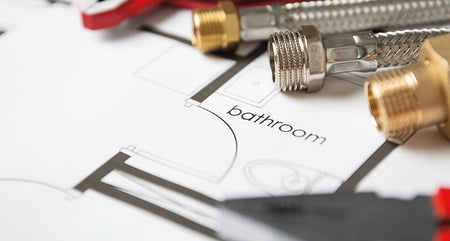Does your seat-and-spring bathroom faucet make noise when you turn it on and off? The most likely culprit is debris that has become trapped, either in the supply lines or inside the faucet itself. You can clear it with a simple procedure called “flushing the lines.”
To complete the project, you will need the following items:
- Cloth Towel
- 1/8-inch Allen wrench
- Bucket or mixing bowl
- White vinegar (optional)
- Extra set of hands

Before you start, know that there are different ways to clean a single-handle faucet versus a two-handle faucet. Once you are sure what kind of faucet you have, skip to the section below for an easy step-by-step guide on how to de-gunk your faucet. Regardless of style, make sure to follow the final step of flushing the lines to ensure there is no debris left.
Note: This article pertains only to seat-and-spring faucets, not ceramic valve or DIAMOND Seal Technology faucets.
For a Single-Handle Faucet:
Step 1: Check the aerator that’s at the end of the spout. Use the tool that came with the faucet to unscrew the aerator counterclockwise by hand. Simply unscrew the aerator at the end of the spout and check it for any debris. You can scrub it with a toothbrush and a solution of white vinegar and water.
Step 2: Shut off the supply valves under the sink. Turn the faucet handle on to completely drain the lines. With the aerator removed and the faucet handle in the on position, turn the water supply back on. The sudden burst of water may remove the debris that’s gotten stuck inside. If you still hear the noise, the debris may be trapped inside the faucet itself.
Step 3: Turn off the water supply and drain the lines as you did before. You’ll need a couple of tools for this part of the process: an Allen wrench (probably 1/8-inch) and a bucket or bowl. Remove the screw cover, and use the Allen wrench to remove the small hex screw holding the handle in place. Remove the handle.
Step 4: Turning counterclockwise, unscrew the dome-shaped cap. With an adjustable wrench, unscrew the nut at the top of the valve. Then, remove the cartridge, being careful to note how it’s positioned in the valve so you can reinstall it later. Now you’re ready to flush the lines. (see below)
For a Two-Handle Faucet:
Step 1: Remove each of the handles and use an adjustable wrench to unscrew the bonnet nuts. Take off the bonnet, then reach in and grab the stem that the handle was attached to and pull it straight up.
Step 2: With the stems removed, insert the Allen wrench into the rubber seat and tilt it back slightly to catch the spring beneath. Lift out the seats and springs; do the same on the other side.
Once the valves are completely disassembled, place a rolled-up towel in back of the sink and turn a bucket upside down over the entire valve assembly. You’ll need an extra set of hands or something heavy to hold the bucket in place. Turn the water supply back on fully. The water will come directly out of the empty valve body and be diverted back into the sink by the bucket. This should clear any remaining debris in the lines.
Turn the water off and reassemble the faucet, making sure there’s no debris stuck to any of the parts.
Reposition and tighten everything securely and then turn the water back on.
